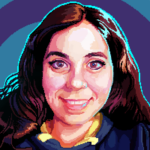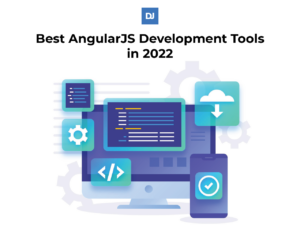In the ever-evolving digital landscape, frameworks, and libraries like React have emerged as pivotal tools for developers, gaining traction among tech giants and the developer community. This article delves into key questions: ‘Why choose React?’ and ‘How does it compare to Node.js for my projects?’.
We provide an in-depth analysis of ReactJS: how React shapes contemporary web development, its advantages, and optimal applications to help you determine its fit for your projects.
What is ReactJS?
ReactJS, as the name implies, is a JavaScript library for building interactive User Interfaces using components, allowing them to change a page without reloading it.
It was initially developed for Facebook to help the development team build a more responsive newsfeed. From there, Instagram used it and later, when it was open-sourced, developers began using it on their projects across the web.
Nowadays, React boasts close to 11 million websites that use it to power their websites and services.
Why Use React? The Top 5 Reasons
React has become one of the go-to JavaScript UI libraries, and it’s easy to see why. By providing a powerful library with reusable components and efficient ways to update a page’s contents, it empowers developers with the tools needed to make highly interactive, consistent, and responsive UIs.
Being a library and not a framework, React can easily be integrated into JavaScript projects with different tech stacks as a UI builder or as an auxiliary library to help with certain UI tasks.
Let’s go over the main advantages of using ReactJS for web development and see why it garnered such mass adoption from web developers over the years.
1. React can be easily integrated and is highly reusable
React’s architecture promotes the use of highly reusable components, lending itself to diverse project types. With Microsoft’s Fluent UI, React aids in creating interfaces mirroring Microsoft’s products, ideal for enterprise applications seeking familiarity and consistency.
MUI’s implementation of Google’s Material Design in React streamlines aesthetic uniformity across web and mobile platforms, ensuring a cohesive user experience. React-Bootstrap, transforming Bootstrap components into React, simplifies transitioning from Bootstrap’s traditional static pages to dynamic React interfaces.
These examples underscore React’s adaptability, demonstrating its capacity to incorporate various design philosophies and accelerate development workflows.
Besides that, you can find many components authored and shared by React’s community. Awesome React Components & Libraries lists several of the more unknown, but still very useful, React components that you can use in your projects.
2. React feels like a natural extension of HTML and JavaScript
React makes use of what it calls JavaScript Syntax Extension or JSX. This extension allows developers to author components and renders using HTML-like language inside JavaScript code.
Take for example, this code:
| const element = ( <h1 className=”greeting”> Hello, world! </h1> ); |
This is code that can be authored in React, but it’s not a string, proper JavaScript, or HTML. However, it is close enough to HTML that it can be authored as such. React takes this code and then compiles it using Babel to turn it into actual JavaScript.
The previously shown code will compile into something like:
| const element = { type: ‘h1’, props: { className: ‘greeting’, children: ‘Hello, world!’ } }; |
By doing this, authoring in React becomes almost like second nature to knowing HTML and JavaScript. Developers already familiar with both will find React to be extremely welcoming and easy to learn.
3. React is built for Efficiency
React’s efficiency stems from its innovative Virtual DOM. Traditional DOM updates are slow, as each change triggers extensive page rewrites.
React’s Virtual DOM creates a lightweight copy of the actual DOM, allowing React to track and manage changes efficiently.
When changes occur, React compares the Virtual and actual DOMs, updating only the necessary parts. This selective update mechanism significantly boosts performance, avoiding the need to refresh large parts of the DOM for minor changes, resulting in a more responsive user experience.
4. React can be a springboard to develop native applications
If you ever want to publish an app on several different platforms while still retaining the advantages of using React, React Native has got you covered. Unlike React, React Native is a framework that allows the development of native apps using React-type components and JavaScript.
React Native isn’t exactly a 1-to-1 transition of React to native platforms. Native forgoes the use of HTML and CSS, but its components still use the same API structure as React’s components.
So, for example, you can have a component in React that goes like this:
| class Welcome extends React.Component { render() { return ( <div> <p>Hello, world!</p> </div> ); } } |
In React Native, to do the same, you’ll code something like:
| export default class App extends React.Component { render() { return ( <View> <Text>Hello, world!</Text> </View> ); } } |
The big advantage is that you can share your business logic between both applications. And, since the components maintain their structure, it’s far easier to make the transition between both and maintain their visual language consistent.
React Native can be used to build Android and iOS apps. Microsoft also maintains the React Native Windows and React Native macOS extensions to allow you to port your reactive Native projects to Windows PCs, Surface Tablets, Xbox, and macOS.
5. React has a massive community and is used extensively by companies
React, initially developed by Facebook engineers, continues to receive significant contributions from them, ensuring its relevance and efficiency in apps like Facebook and Instagram.
The React team frequently updates not only the library itself but also develops tools to work with it on their blog. An example of this is codemod, which refactors and updates React code to keep it up to date with its latest APIs.
Also, since it became open-source, React has been adopted by many developers as their go-to web UI library. Consequently, many components, component libraries, and tools have been developed over time to help out other community members with their own React projects. This makes it easier to find solutions and components to solve common problems during development.
The React community primarily congregates on platforms like the Reactiflux chat on Discord, where developers can discuss React topics, share knowledge, and seek help. Additionally, forums like Stack Overflow and GitHub also serve as key platforms for the React community, offering spaces for collaboration, problem-solving, and contributions to the React ecosystem. These platforms provide a wealth of information, resources, and community interaction for anyone working with React.
React’s robust adoption by industry giants like Uber, Airbnb, Shopify, Netflix, Pinterest, Amazon, and Udemy, further cements its status as a premier choice for web development.
When to Use React for Web Development?
React has some clear advantages that can be leveraged to make some web pages and apps. But what is React good for? What are the projects where it shines?
Single-Page Applications
By far the biggest target of React ever since it began development, Single-Page Applications are a huge staple of the current internet era. Users want the pages they visit to be seamless and fast. React was built to cater to these needs while keeping a page updated and responsive to user input.
React is best used on pages that require a lot of information to be updated fairly regularly or even in real-time. React makes these changes with far greater efficiency than other options due to its reconciliation technology.
Examples of these types of applications and pages include:
- Dashboards
- Data visualization/analysis tools
- Social networks
- Online file storage managers
These are demanding apps where users always want to stay on top of the most up to date information.
Community-Driven Websites
Websites that feature user-to-user interaction can also leverage the power of React to create a dynamic environment. Places like blogs, forums, online galleries, and even video-sharing platforms can leverage React’s power to create highly interactive experiences.
Other types of websites that benefit from this dynamism are wikis. By making them easier and faster to navigate, they help their users find the information they need quickly.
E-commerce Solutions
Whether grids with item listings or buy buttons, e-commerce platforms are known for their multiple components and use. React can easily implement these components and prevent the developers from repeating code, speeding up the platform’s development while also keeping it more maintainable in the long run.
Can you Use ReactJs in Game Development?
ReactJS is primarily used for building user interfaces in web and mobile applications, and it’s not the standard choice for game development, especially for complex or performance-intensive games. However, React can be used in certain contexts within game development:
- Simple Web-Based Games: For simpler, browser-based games that don’t require intensive graphics or real-time rendering, React can be a suitable choice.
- Game Editors and Tools: React might be used for creating interfaces for game development tools or editors, particularly those that are web-based.
- UI Elements in Games: In larger games developed with engines like Unity or Unreal, React (or React Native) could be employed for developing certain UI elements or menus, especially if there’s a web-based component involved.
Conclusion
Since it’s also platform and tech stack agnostic, it’s easy to integrate it into existing projects if you need to expand on an existing product.
If you leverage the vast community it has, you can easily find solutions to common problems, be it a component that already does what you need or some help to make your own custom components. This can speed up the development process of your page or app.
If you’re looking to hire React developers for your company or to help with your projects, DistantJob can help find you the best candidates that fit your company and projects’ needs.





